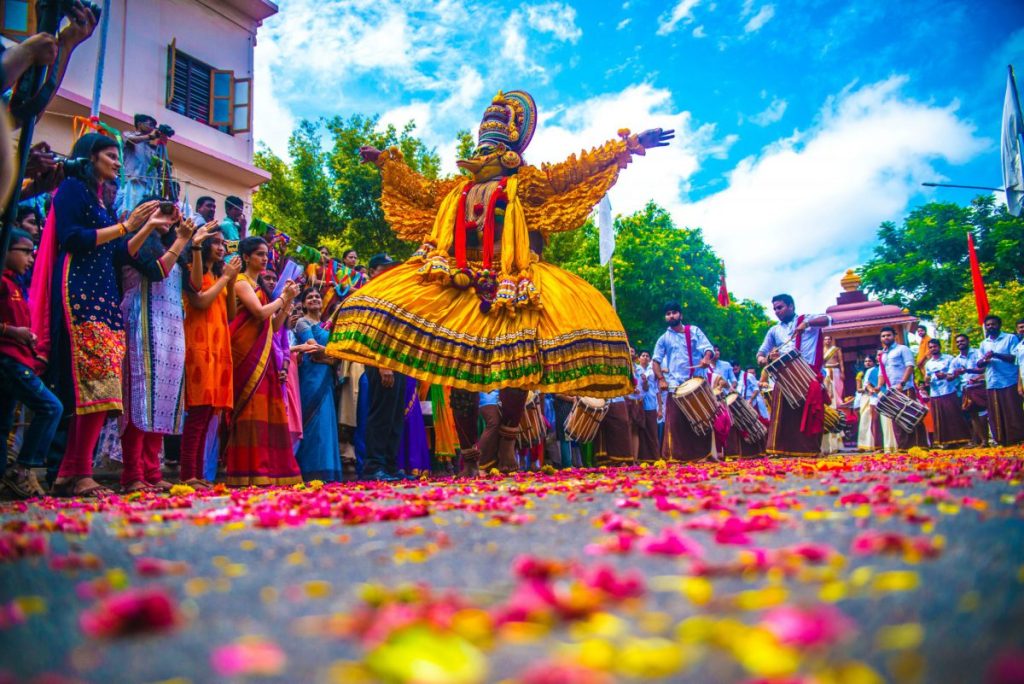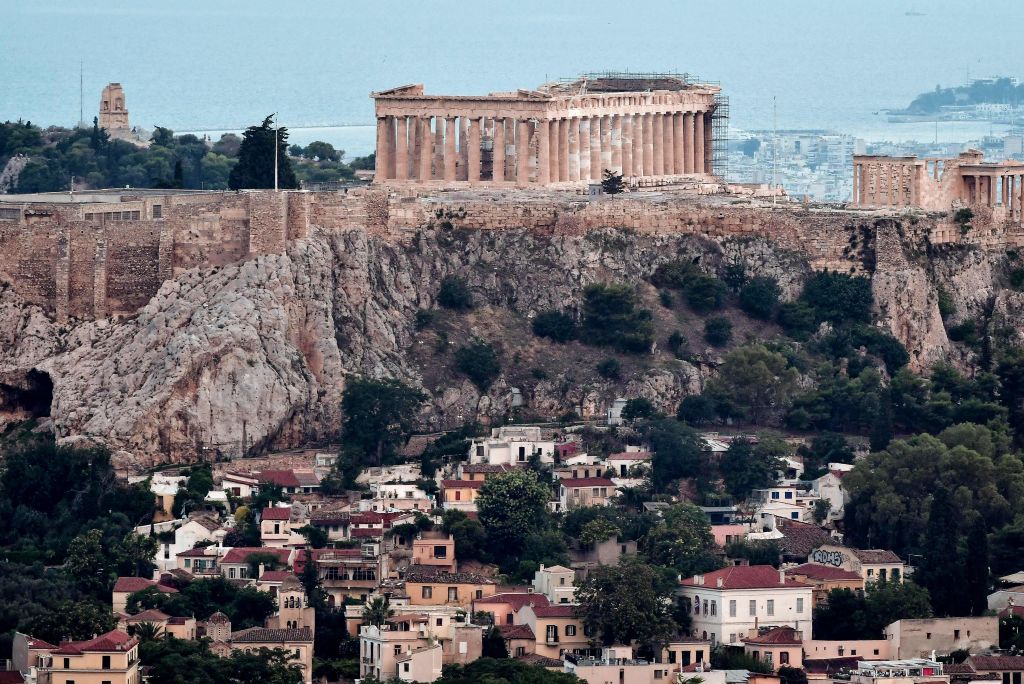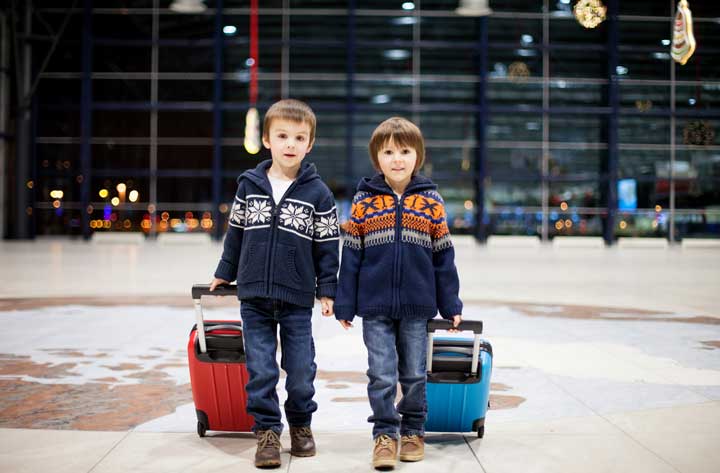Festivals are vibrant expressions of cultural heritage, allowing communities to come together and celebrate their unique traditions. While globally famous festivals like Carnival in Brazil or Oktoberfest in Germany attract millions of visitors, countless lesser-known festivals showcase the quirky and fascinating aspects of human creativity. These hidden gems often surprise travelers with their unexpected charm and unparalleled cultural experiences. Let’s dive into some unique festivals from around the world that you’ve probably never heard of but absolutely need to add to your travel bucket list!
Huli Wigmen Festival (Papua New Guinea)
Deep in the heart of Papua New Guinea, the Huli Wigmen Festival is a stunning display of vibrant colors, ancestral pride, and intricate rituals. The Huli people, known for their elaborate wigs made from human hair, celebrate their unique identity through dance and storytelling.
This festival serves as a cultural gathering where tribes perform traditional dances, paint their faces in bright yellow, red, and white, and adorn themselves with exotic feathers. The wigs, crafted over months, symbolize strength, wisdom, and tribal connection. Attending the festival provides a rare glimpse into the unspoiled traditions of one of the world’s most fascinating indigenous communities.
Kanamara Matsuri (Japan)
Every spring, the streets of Kawasaki, Japan, come alive during the Kanamara Matsuri, also known as the “Festival of the Steel Phallus.” This unconventional celebration dates back to the Edo period when sex workers prayed for protection against sexually transmitted infections. Over time, it evolved into a festival promoting fertility, safe sex, and sexual health awareness.
The festival features colorful parades, giant phallus-shaped floats, and even themed candies and souvenirs. While it may seem shocking at first, Kanamara Matsuri carries a deep cultural significance, encouraging open discussions about traditionally taboo topics in a lighthearted and joyous manner.
La Tomatina (Spain)
Imagine thousands of people hurling ripe tomatoes at each other in the streets—it sounds like a wild dream, but it’s an annual reality in Buñol, Spain. La Tomatina, the world’s largest food fight, originated as a playful street brawl in the 1940s and has since evolved into a globally renowned event.
Participants gather on the last Wednesday of August to throw overripe tomatoes at friends, strangers, and anyone in sight. Streets turn into a sea of red, laughter fills the air, and the atmosphere is electric. While it might seem like pure chaos, La Tomatina is a celebration of fun, community, and letting go of inhibitions.
Goat Tossing Festival (Spain)
Another peculiar festival in Spain, the Goat Tossing Festival in Manganeses de la Polvorosa, has a controversial history. For centuries, villagers honored St. Vincent by tossing a live goat from the church tower, symbolizing his miraculous act of saving a child from falling.
Although animal rights concerns led to the modern practice of using a stuffed goat instead, the festival retains its symbolic importance. Villagers and visitors gather to witness this age-old tradition, followed by lively feasts and celebrations. Despite its contentious past, it remains a fascinating insight into Spain’s rich cultural tapestry.
The Cooper’s Hill Cheese Rolling (England)
If you thought chasing a wheel of cheese down a steep hill sounds bizarre, wait until you see the adrenaline-fueled Cooper’s Hill Cheese Rolling Festival in Gloucestershire, England. Participants risk life and limb as they race downhill after a hefty wheel of Double Gloucester cheese.
The first person to catch or cross the finish line wins the cheese. The event draws thrill-seekers from around the world, despite the frequent injuries. With its mix of absurdity and danger, this festival perfectly encapsulates the quirky side of British culture.
Boryeong Mud Festival (South Korea)
Held annually in the seaside town of Boryeong, South Korea, the Boryeong Mud Festival is a celebration of fun, health, and messiness. It originated in the 1990s as a marketing event to promote the region’s mineral-rich mud, known for its skincare benefits. However, it quickly transformed into one of the country’s most exciting and playful festivals.
The festival features mud wrestling, mud slides, and even a mud prison, where participants get coated in thick layers of gray clay. Visitors of all ages take part in mud-based activities, enjoying a mix of rejuvenation and pure entertainment. Concerts, parades, and fireworks add to the lively atmosphere. Whether you’re there for the skincare benefits or just to unleash your inner child, this festival promises a memorable experience.
Monkey Buffet Festival (Thailand)
In the city of Lopburi, Thailand, the Monkey Buffet Festival honors the long-tailed macaques that roam the area. These monkeys hold a special place in local folklore and are believed to bring good fortune. The festival involves offering an extravagant feast of fruits, vegetables, and sweets to thousands of macaques.
During the event, tables stacked with colorful food are set up in the streets and temple grounds. The sight of monkeys feasting, playing, and interacting with people is both entertaining and heartwarming. The festival not only attracts tourists but also serves as a way for locals to express gratitude to the monkeys for their role in boosting tourism.
Underwater Music Festival (USA)
Located in the Florida Keys, the Underwater Music Festival is one of the world’s most unusual celebrations. Every July, divers and snorkelers gather at the Looe Key Reef to enjoy a surreal concert beneath the waves. Waterproof speakers broadcast ocean-themed tunes, creating a magical underwater soundscape.
Participants often wear whimsical costumes, such as mermaids or sea creatures, as they “dance” along with the marine life. The festival also raises awareness about marine conservation, promoting the protection of coral reefs. Whether you’re a music lover or an ocean enthusiast, this unique event offers an unforgettable blend of art and nature.
The Night of the Radishes (Mexico)
One of the quirkiest festivals in Mexico, The Night of the Radishes (La Noche de Rábanos) takes place every December in Oaxaca. This creative event revolves around carving oversized radishes into intricate sculptures depicting scenes from folklore, religious stories, and daily life.
Participants spend hours transforming radishes into stunning works of art, which are then displayed in the city’s main square. Visitors marvel at the creativity and detail of the carvings while enjoying festive music and traditional Oaxacan dishes. The event highlights the region’s agricultural heritage and artistic ingenuity, making it a must-see for culture enthusiasts.
Els Enfarinats (Spain)
Els Enfarinats, or “The Flour Battle,” is celebrated in the Spanish town of Ibi during the annual Day of the Innocents on December 28. This festival involves a mock battle between two groups of villagers who pelt each other with flour, eggs, and firecrackers.
The festival’s origins are unclear, but it has become a playful way for locals to let loose and embrace their mischievous side. Participants dress in old military uniforms and engage in humorous skirmishes, turning the streets into a chaotic yet joyful mess. Els Enfarinats is a true spectacle, offering visitors a glimpse into Spain’s rich tradition of festive humor.
Up Helly Aa (Scotland)
Up Helly Aa is an extraordinary fire festival celebrated in the Shetland Islands of Scotland. This festival, held annually on the last Tuesday of January, pays homage to the region’s Viking heritage. The highlight of the event is the torchlit procession, where participants dressed as Vikings march through the town, carrying flaming torches.
The centerpiece of the festival is a replica Viking longship, which is ceremoniously set ablaze. The fiery spectacle symbolizes the end of winter and the hope for a brighter future. Following the procession, locals gather for feasts, dancing, and storytelling. This festival is a captivating blend of history and community spirit, offering an immersive experience for visitors.
Thaipusam (Malaysia)
Thaipusam is a deeply spiritual Hindu festival celebrated primarily in Malaysia, Singapore, and parts of India. Devotees honor Lord Murugan, the god of war, by participating in acts of devotion that include prayers, offerings, and self-mortification. The festival is known for its striking visual displays, where some participants pierce their bodies with hooks, spears, and skewers as a show of faith and endurance.
In Malaysia, the Batu Caves near Kuala Lumpur become the epicenter of the celebration. Pilgrims climb the 272 steps leading to the temple, often carrying elaborately decorated kavadi (burdens) as an offering. Thaipusam is an awe-inspiring event that reflects unwavering devotion and a rich spiritual tradition.
Songkran (Thailand)
Songkran marks the Thai New Year and is one of the country’s most exciting festivals. Celebrated in April, this festival involves a nationwide water fight that lasts for several days. Originally, the tradition of sprinkling water was a way to bless and cleanse others, but over time, it evolved into a joyous celebration of renewal and fun.
During Songkran, the streets become battlegrounds for water fights, with participants armed with buckets, water guns, and hoses. In addition to the playful chaos, locals visit temples to make merit, clean Buddha statues, and spend time with family. Songkran perfectly blends spiritual reflection with lighthearted celebration, making it a must-experience event for travelers.
Conclusion
From colorful parades to wild food fights, unique festivals offer a glimpse into the rich tapestry of human culture. These lesser-known celebrations not only preserve ancient traditions but also invite people from all walks of life to connect and share in the joy. Whether you’re a thrill-seeker, a history buff, or simply curious about the world, exploring these hidden gems will leave you with unforgettable memories. So pack your bags, step out of your comfort zone, and experience the vibrant diversity of festivals across the globe!
FAQs
1. Why are festivals important for cultural preservation?
Festivals help keep traditions alive by passing down rituals, stories, and customs to future generations. They also foster a sense of identity and pride within communities.
2. How can one participate in these festivals?
Research the dates and locations, and plan your trip in advance. Respect local customs and dress codes to ensure a welcoming experience.
3. Are these festivals family-friendly?
Many of these festivals, like La Tomatina and Songkran, are family-friendly, while others, such as Thaipusam, may be more suitable for adults due to their intense nature.
4. What should I pack when attending a festival abroad?
Comfortable clothing, waterproof gear (for water-based festivals), and essentials like sunscreen, snacks, and a camera to capture the moments.
5. Which festival would you recommend for first-time travelers?
Songkran in Thailand is a great starting point, as it’s widely celebrated, easy to join, and offers a perfect blend of cultural and fun activities.



